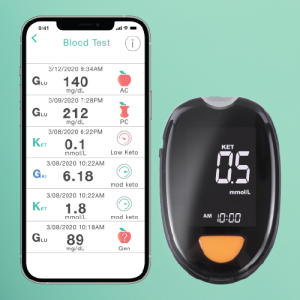How it started
The ketogenic diet (keto) has exploded into popularity within the last decade, and is now one of the most popular diets around with a focus on high fats, low carbs, and moderate amounts of protein. While it has gained traction in more recent years, the keto diet was widely used to treat epilepsy back in the 1920s. Advancements in medicine made it wane in popularity, but it was reintroduced to the mainstream public in the mid 1990s with a Dateline episode detailing how a keto diet helped a two year old named Charlie manage epileptic seizures. A couple years later Charlie’s father, Jim Abrahams, directed a film called …First Do No Harm about a mother’s battle for her son’s epilietic treatment using the keto diet. It was a movie made for TV starring none other than Meryl Streep, and helped bring further awareness to keto (you can stream the movie on Amazon Prime). While it’s still used to help manage epilepsy, it’s also helpful for diabetics to manage blood sugar levels, and is often used for general weight loss and management.

So…what exactly is keto anyway?
The goal of a keto diet is to minimize carb intake and increase fats — this forces the body to burn fat to use as energy — a metabolic state called ketosis. While everyone’s needs are different, this can mean that up to 75% of your calorie intake will come from fat, about 15-30% from protein, and just 5-10% from carbs. With such a low percentage of carb intake, that often means no more than 50 grams a day. Foodwise, it’s easy to consume lots of carbs. About 2 bananas or 3 slices of bread would already meet that maximum carb intake.

How do I know if I’m in ketosis?
When your body doesn’t have enough carbs to burn for energy, it’ll turn to fat instead. Your liver will convert the fat into a type of acid called ketones, and releases it into the bloodstream for your body to use for energy. Once you start a keto diet, you can hit ketosis in as little as 3 days.
To see if you’re in ketosis, you can measure ketones by testing your breath, urine or blood. Breath tests are the least invasive of the three, but are also the least accurate since readings can vary due to the time of day, how you’re breathing, or even your toothpaste and mouthwash. Urine tests are widely available and easy to use, and the test strips change color based on the ketone levels. The downside to urine testing is trying to match up the test results against the color chart. That makes reading the results very subjective and more open to interpretation. The best method of testing is with blood, which requires pricking a finger for a little bit of blood to test. It’s by far the most accurate testing method available. If you prefer exact numbers to measure and compare daily ketone levels and changes, this is the way to go.

Why testing is important
Regular and consistent testing is easy to do in the comfort of your own home. Without testing, you won’t know how to modify your diet to remain in ketosis, or if your ketone levels are too high, especially if you’re diabetic.
The Tricella Trio measures ketones, glucose, autocalculates GKI, and records it all in the accompanying free Tricella Health app. If you’re on any medication or have diabetes, consult with your doctor before embarking on a diet like keto. It’s important to have their guidance when making any lifestyle changes to fulfill your health goals, and testing for ketones will help you monitor your progress–and stay on top of your health.

